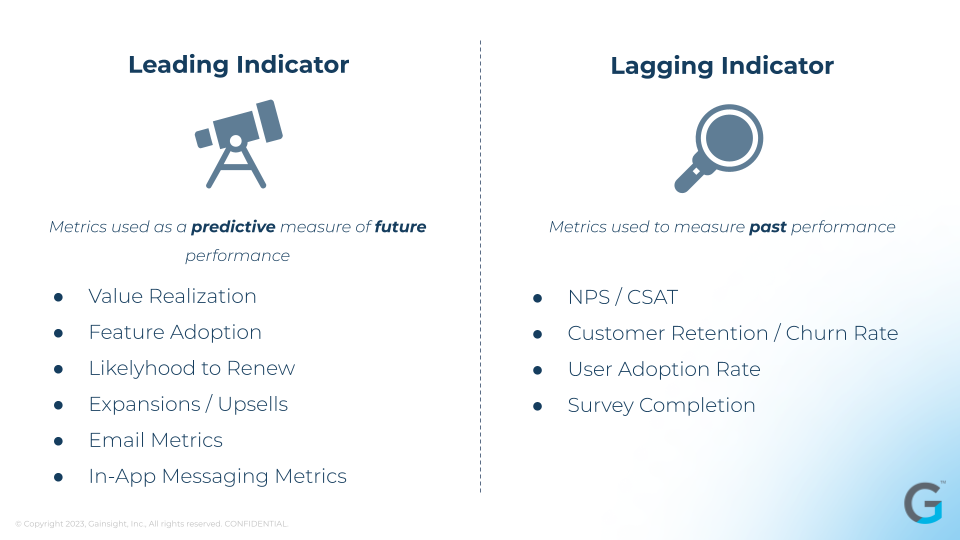Whether you are beginning your journey to establishing Digital Customer Success (Digital CS) within your organization, or have been executing upon Digital CS for some time now, it’s important to understand how to effectively measure success with the digital motions you and your team create.
At Gainsight, we take great pride in not only our Digital CS motions, but the results we measure. So much so, that we often share them publicly at our Pulse conferences to help provide confidence to take the leap into the world of digital cs, and inspiration on what to do next.
Much alike our dedicated customer success teams, we look to leading and lagging indicators to help us measure our efficacy. The key difference however, is that these indicators carry a priority toward data points available to us, and are repeatedly measurable in an automated fashion.
Here are just some of the leading and lagging indicators we measure by:

You may look at the list of indicators above with some confusion and curiosity. “Why are email and in-app messaging metrics leading indicators instead of lagging?” is the most common questions we receive and it comes down to the thought pattern behind the metric.
For example: In a traditional marketing organization, you may measure email metrics as lagging indicators to validate success with your marketing campaign.
Within the world of Digital CS however, the emails we send are rarely one time sends. In fact, they are moments strategically placed within the customer journey, designed to be sent on a regular basis but to a new audience each time. The contents of these emails differ as well, they tend to focus more on encouraging your customer to complete a task or action. If your customer is to open the email, and click the links within, then we can predict that at some point in the future they are likely to complete the intended action/behavior.
Leveraging the right tools can help enhance the reporting of these metrics. By collecting telemetry data with Gainsight PX, community data from Gainsight CC, your customer learning/education data from Gainsight CE, and collating them together within Gainsight CS, leveraging our Health Scorecard, you can create a custom health scorecard dedicated to your digital cs program and it’s motions.
About the Author
My name is Aaron Hatton and I’m a Digital Program Manager at Gainsight, helping develop Digital Customer Success strategies to elevate the Gainsight experience for all our customers and products such as our recently launched engagement to confirm end user roles and goals. Follow me for more useful tips and tricks like this in the future.


